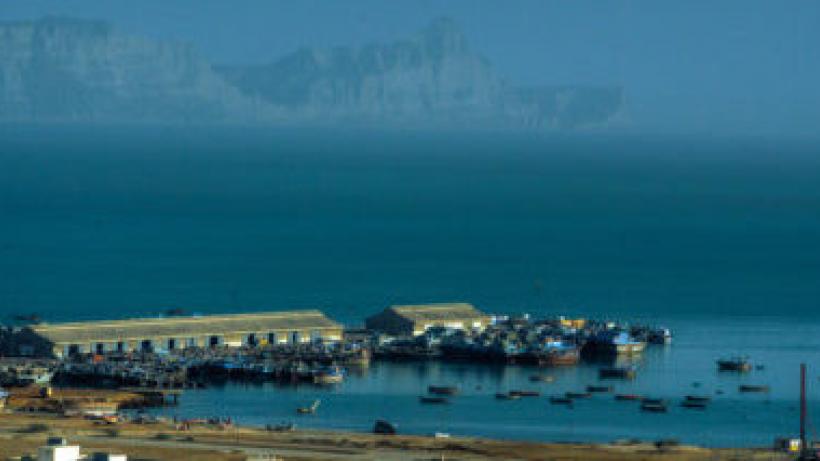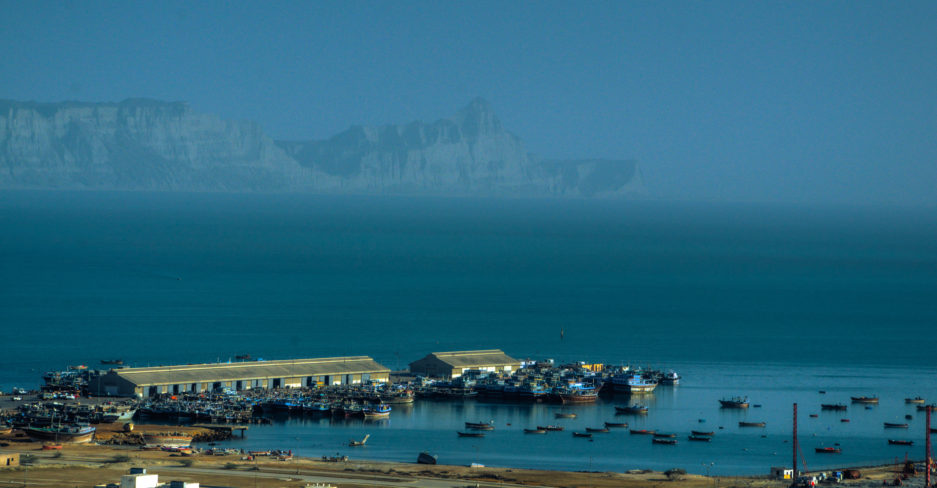
Four approaches to unleashing Pakistan’s growth
A recent seminar in Islamabad titled “Creating Capabilities for Growth”, organised by the International Growth Centre (IGC) and the Consortium for Development Policy Research (CDPR), presented IGC-funded studies to an audience of academics, policymakers, development professionals, politicians and business leaders and fostered discussions to connect research to strategies for meeting Pakistan’s economic growth potential.
The seminar highlighted four big takeaways on how Pakistan can address its challenges in private sector development, state accountability, regional trade partnerships and capture opportunities to cultivate a stronger economic partnership with China.
1. Fostering a more robust private sector
Barriers to competition: According to an ongoing study of the garment industry, Pakistan’s dominant manufacturing sector, export-oriented firms face a host of constraints to their competitiveness: lack of access to global markets, energy shortages, unfavourable trade policies and customs procedures, insufficient skills and rising labour costs, to name a few. Energy shortages, for example, have caused capacity utilisation in the garment sector to fall below 70%. Pakistan’s garment industry is largely cotton based – a globally declining raw material. Importing other raw materials cheaply is made more expensive by current customs procedures.
The heart of CPEC (China-Pakistan Economic Corridor)
Image Credit: umairadeeb
Greater access to international markets have made progress in remedying constraints to competition. In 2013, Pakistan was granted the Generalised System of Preferences Plus (GSP+) status by the European Union (EU). GSP+ allows 20% of Pakistani imports exports to enter the EU common market at zero tariff, and an additional 70% at preferential rates. This increased Pakistan’s garments exports to the EU by 23% in two years. Despite this, total exports still fell by 12% over the same period. Without advancements on multiple barriers, Pakistani firms will remain less competitive.
Innovation indicators: A study of innovation in Pakistani firms found the following indicators were predictive of more innovative practices: larger firm size, export-orientated manufacturing, higher value manufacturing (e.g. apparel vs. textile manufacturing) and firm concentration in urban areas. Additionally, when assessing sources of information and cooperation among firms, most firms identified market sources as the most important avenue for information and cooperation, while only 5% thought universities were important.
The authors of the study recommended the following targets for innovation expenditures: Increasing research and development, targeted subsidies for innovation, expanded role for universities, and establishing of more urban clusters for manufacturing.
Management practices: A study comparing the adoption of management practices between American and Pakistani firms and found that U.S. regions with the lowest adoption levels of management practices, still utilised more than double the amount of management practices of firms in Punjab. Higher adoption of structured management practices in Pakistan is however, correlated with higher labour productivity, more profits, and faster employment growth.
According to researchers, variables driving adoption of management practices in Pakistan include ownership of the firm (either as a private limited company or a partnership), number of employees, whether the firm is an exporter and whether managers and non-managers have higher-education degrees.
2. Building state capability
Technology for accountability: In Pakistan’s livestock sector – which comprises 12% of its GDP - many farmers rely on government veterinarians to artificially inseminate cows. Lack of performance review for government veterinarians makes it impossible for farmers to know which veterinarians are reliable.
Leveraging the wide ranging penetration of mobile phones in Pakistan, researchers developed a crowdsourced, cellphone-based rating system for government veterinarians in the livestock sector. Farmers provided feedback on their experiences to call centres. Data was collected and aggregated and the ratings of veterinarians was made available to the farmers through their mobile phones.
Farmers using the system reported a 27% increase in successful inseminations and were 33% more likely to continue using government veterinarians rather than switching to the private sector. Researchers suggested that if this model is scaled up and applied to different sectors, it could increase returns to users and public sector accountability.
Curbing absenteeism: Pakistan’s public sector is beset with high levels of absenteeism. Research presented at the seminar studied this problem in Kyber Phaktunkhwa (KP) province’s education sector, where 18% of teachers are absent during normal working hours. This is connected to poor student outcomes: Only 40% of of children in the 5th grade can perform 2nd grade math.
Using data on attendance and government inspections, the study found that increasing teacher attendance by an additional two days increases the student attendance-to-enrollment ratio by one percent - the equivalent to investing in one new basic infrastructure facility in a school. Increasing monitoring, aligning teachers’ performance goals with performance measures for better student outcomes can lower absenteeism and improve education outcomes.
Flexible rules to improve procurement efficiency: Governments procure goods from competitive markets, meaning they should be paying the same price as private firms do in the open market. However, under pressure to follow strict rules and regulations on procurement, public sector procurement can be subject to exorbitantly higher pricing. This is estimated to cost 1% of global GDP.
And Pakistan is no exception. A new study is currently testing the effects of incentives and flexible rules to motivate civil servants to procure more efficiently, as well as introducing an online procurement system to make transactions more transparent.
3. Regional trade and tourism
Trade expansion east and west: Pakistan is surrounded by large economic blocs: China, India, the Middle East, and Central Asia. Increasing regional trade with these blocs presents a huge growth opportunity, but high transportation costs and tariff and non-tariff barriers hinder trade expansion.
Research presented at the seminar identified obstacles and opportunities for trade expansion. There is a growing urgency to expand trade as Pakistan’s imports outweigh its exports, and a relatively small amount go to neighbouring countries. Exports to China and India make up .0003% and .0002% of Pakistan’s GDP, respectively.
Bordering these economic blocs should, in theory, reduce trade barriers. But poor relations with India and instability in Afghanistan have lead to strict border control. Land routes with China remain underdeveloped (although new Chinese investment, discussed below, is changing that). Research modelled that increasing barriers with China and India would be the equivalent of increasing tariffs by 37% and 101%, respectively.
The next phase of the research will look at the opposite: How liberalising trade could reduce tariffs?
Reduced costs and better trade composition for exporting firms: Only 23% of Pakistani firms export, and even those firms sell a maority (70% )of their goods to the domestic market. Burdened by high trade costs, most firms last no more than a few years in the export market.
Research on trade costs and the composition of export-oriented firms illustrates this problem: Just 1% of firms handle an outsized 50% of Pakistan’s exports.
Policy recommendations to improve exports sugest that policymakers should actively engage with exporting firms, imports should be further liberalised (to make inputs for exported goods cheaper), new trade policies and partners should be introduced and trade-processing infrastructure should be improved.
Heritage tourism: For thousands of years, different cultures, empires and religious groups have occupied territory in what is now Pakistan, leaving behind several monuments. This poses a huge opportunity for Pakistan’s tourism industry.
According to 2014 data, tourism comprises only 0.4% of Pakistan’s GDP. If Pakistan generated the international average for tourism revenue, its share of GDP would more than quadruple. Religious tourism in particular could provide large gains. The study estimated that pilgrimage tourism to Buddhist and Sikh religious sites in Pakistan could add a total of Rs 18.3 billion to the domestic economy.
Pakistani tourism suffers for various reasons, including security concerns, a strict visa regime, poor transport infrastructure, underdeveloped hospitality services and a lack of international openness. Overcoming these barriers will require initiating evidence-based reforms for managing tourism with cross-departmental oversight, private sector-led growth, improved planning of zones for tourism based on forecasted demand, preservation and maintenance of cultural heritage sites and involvement by local communities to develop tourist attractions.
4. Reaping the benefits of the China-Pakistan Economic Corridor (CPEC)
Ahsan Iqbal, Minister of Planning and Development, attended the seminar to discuss how Pakistan can prosper from China’s $46 billion investment in infrasructure and energy known as the China-Pakistan Economic Corridor (CPEC).
Four key pillars of CPEC were identified:
1. Gwadar: The up-and-coming port on Pakistan’s coast along the Arabian Sea through which Chinese goods have already entered has the potential to attract further maritime trade.
2. Energy: $35 billion of the CPEC investment is going into energy. These projects will add 11,000 megwatts (MW) of power to Pakistan’s grid by 2018. To put that in context, Pakistan added about 17,000 MW from 1947 to 2013. Power is also being diversified. Right now, Pakistan relies on a large amount of hydro-electric production, which is unavailable during droughts. CPEC investments in solar, wind and coal, will diversify Pakistan’s energy mix to ensure a reliable supply of power. Iqbal added that the new injection to power supplies will put pressure on the government to address power losses from problems affecting transmission and distribution.
3. Transport infrastructure: Chinese investments may not bebringing new major roads, but is rather building on existing transport networks. Old highways and railways are being upgraded, and missing links, incorporating previously cut-off regions are being added.
4. Industrial cooperation: The most exciting prospect of CPEC, according to Iqbal, is the opportunity to partner with China to enhance production through industrialisation. Chinese firms with excess capacity have shown interest in re-locating industries to Pakistan where labour costs are lower, as well as investing in existing Pakistani firms that stand to benefit from CPEC infrastructure.
Iqbal concluded that these elements will only work if Pakistan ensures that all projects are grounded in scientific planning rather than personal preferences or hearsay. He further stressed that adopting an incremental approach to project implementation to tackle the easy challenges could help build momentum for carrying out more complex projects later.


